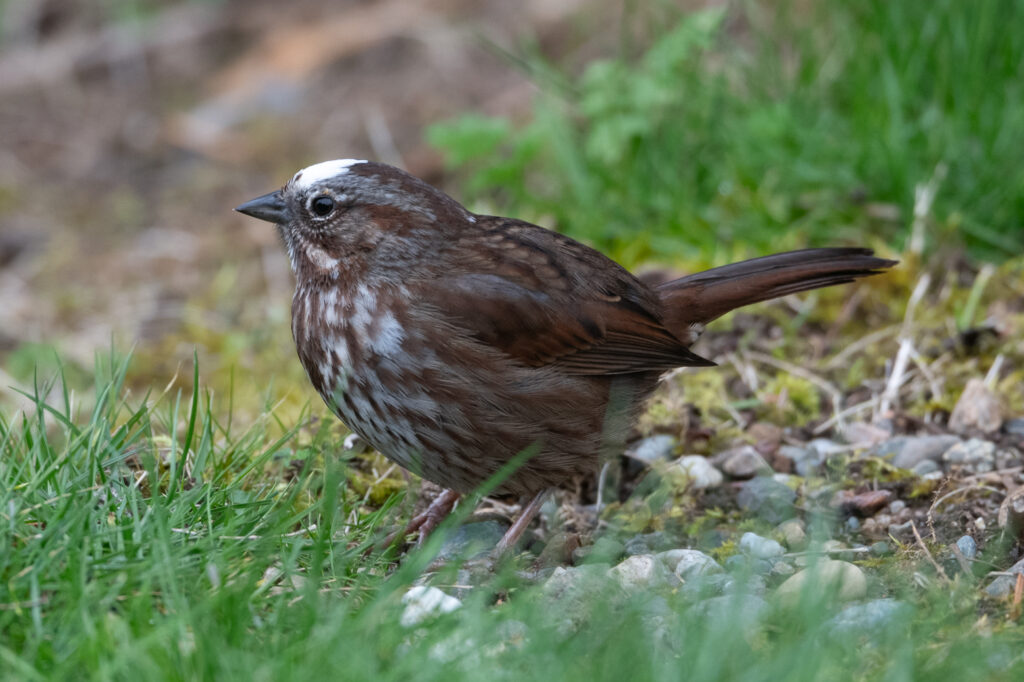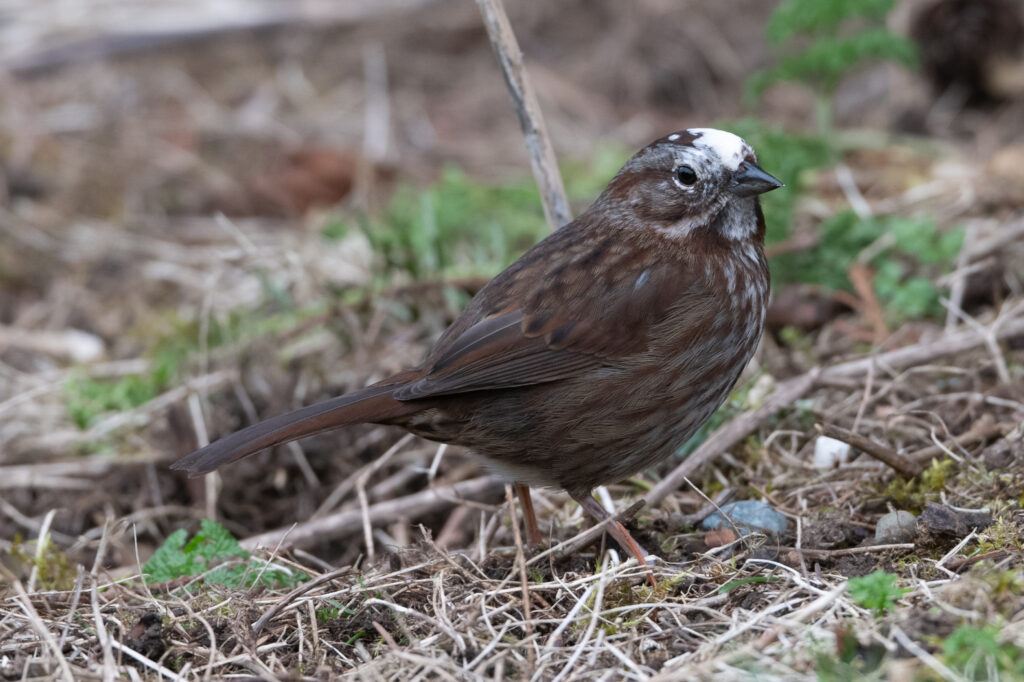On March 11, 2024, I went for my morning walk in Washington Park. I encountered the same leucistic Song sparrow that I had first seen in the park a year or two previously. The bird has a prominent white patch on its forehead which appears much like a headlight.
I had originally seen the bird on the loop road in the park but after not having seen the bird for several months I discovered this past month that the bird had moved several hundred yards from a heavily forested environment to a more open, and for me, accessible, environment. On this morning the sparrow readily came to a small amount of sunflower seed I put out and I was able to photograph the bird with my iPhone.
I had made considerable efforts in the past to obtain quality photos of the bird, but it had consistently avoided me with its change of location and shyness. But on this day the bird’s location and behavior gave me renewed hope that I might be able to obtain some quality photographs.
I retuned to the park in the early afternoon and with a little “pishing” and some ‘habitat enhancer’ I managed to reacquire the bird, although it was much more elusive than it had been early that morning. After a little frustration with the bird’s initial behavior I finally got the opportunity for some quality photos with my Nikon D850 and Nikkor 500mm f5.6 lens.


I spend a lot of time watching and photographing birds and, since most birds aren’t readily identifiable as individuals, I seldom have the opportunity to track them from one year to the next. This bird, by virtue of its leucitism, is different. I get a lot of satisfaction in knowing that this bird has survived (this factor alone can be difficult for leucistic birds) and that I have been able to ascertain its location from year to year.
